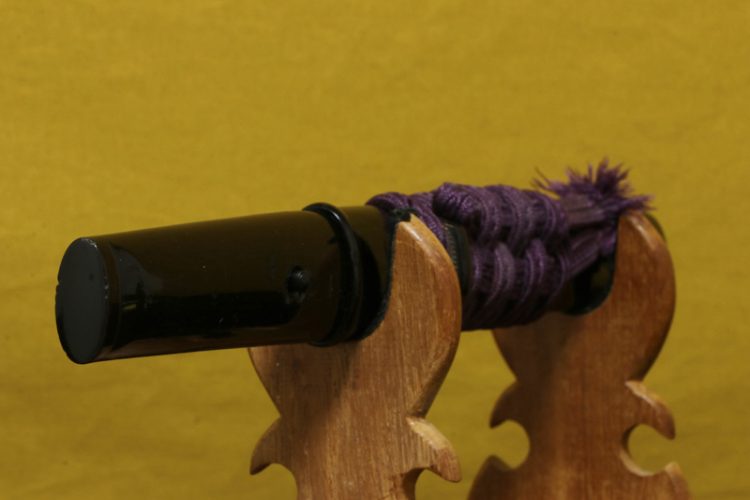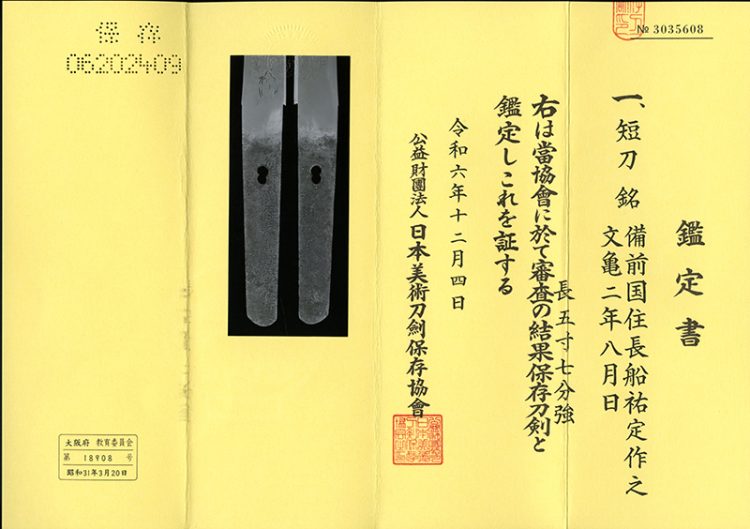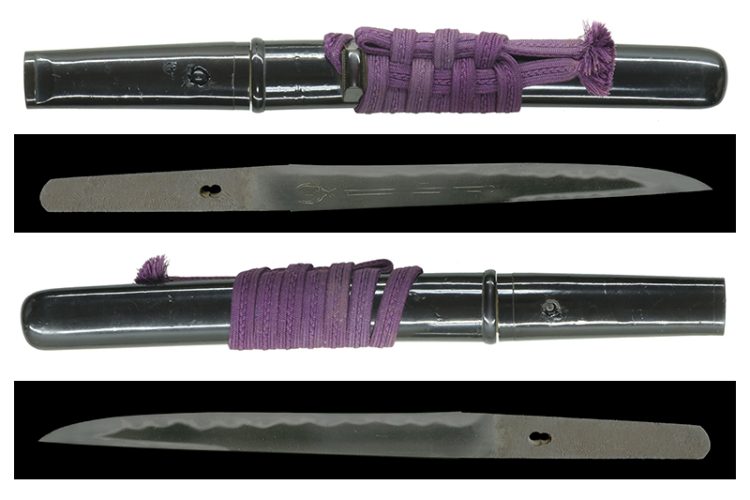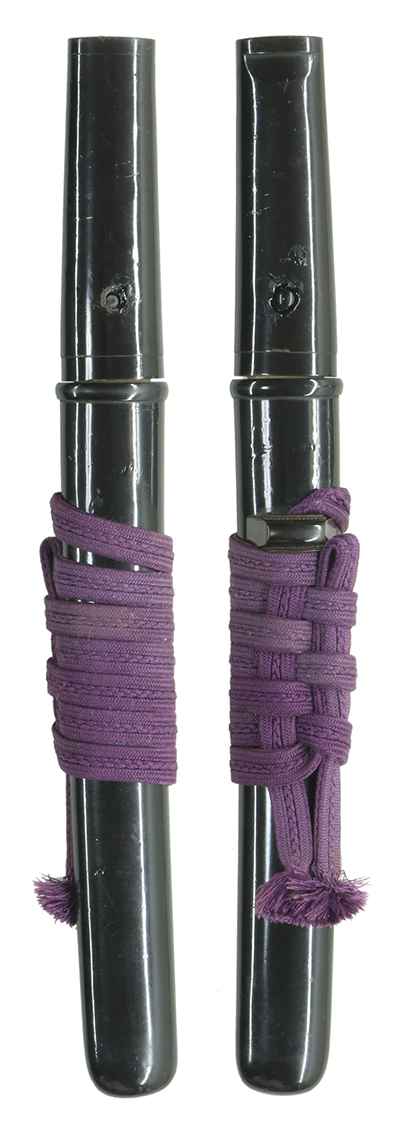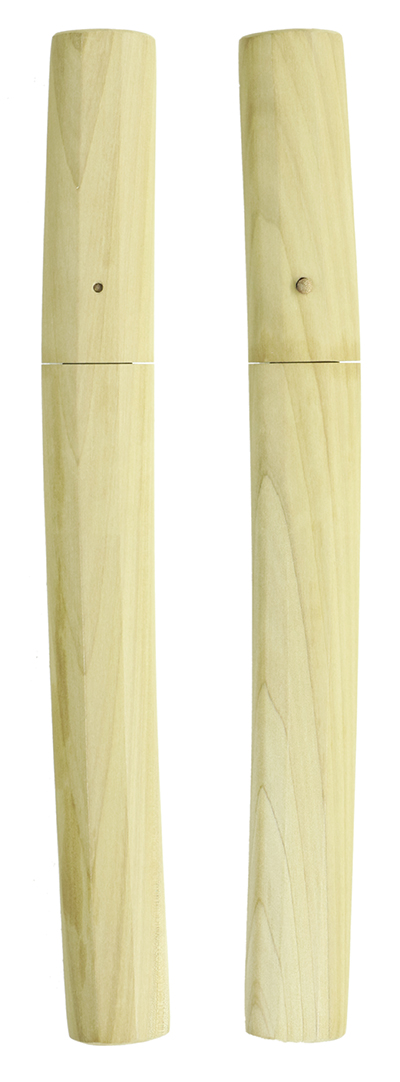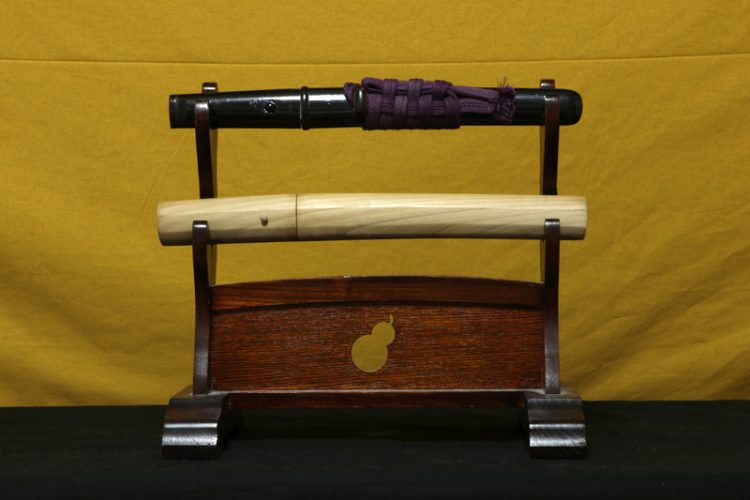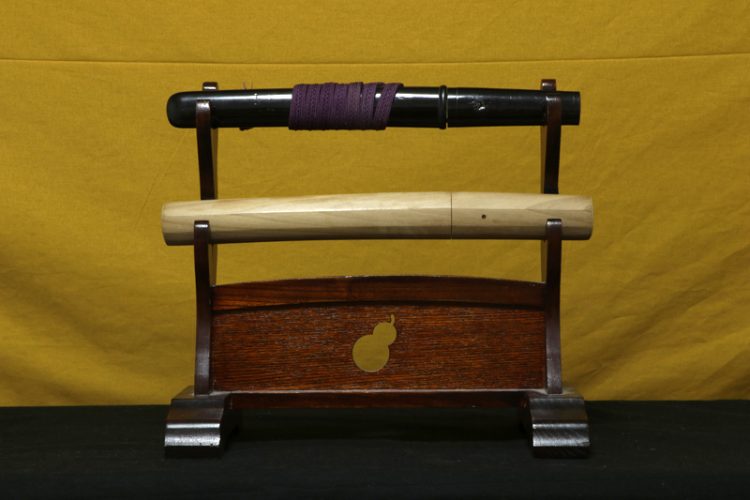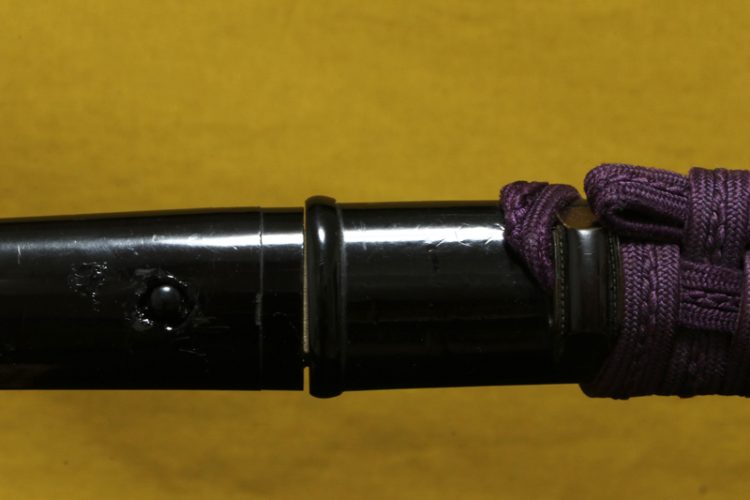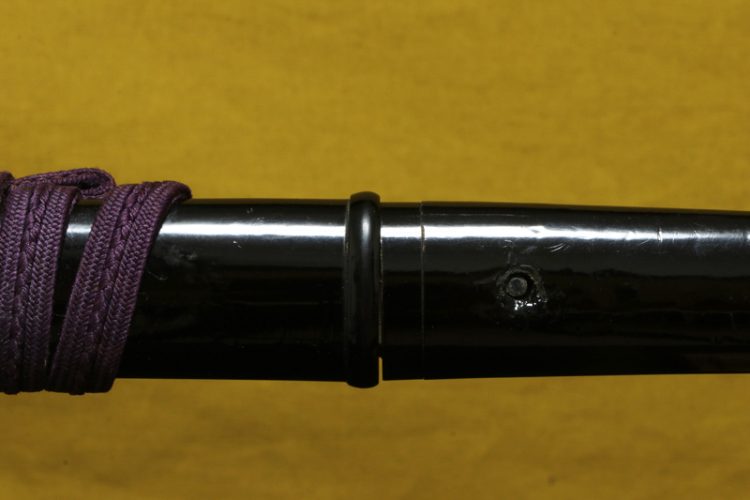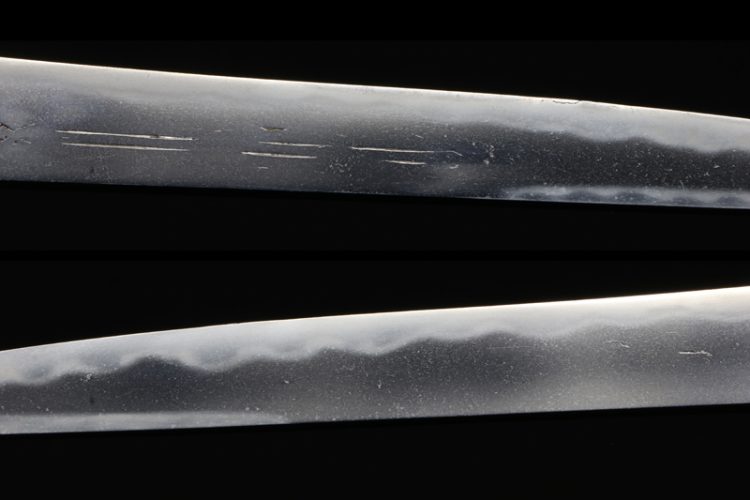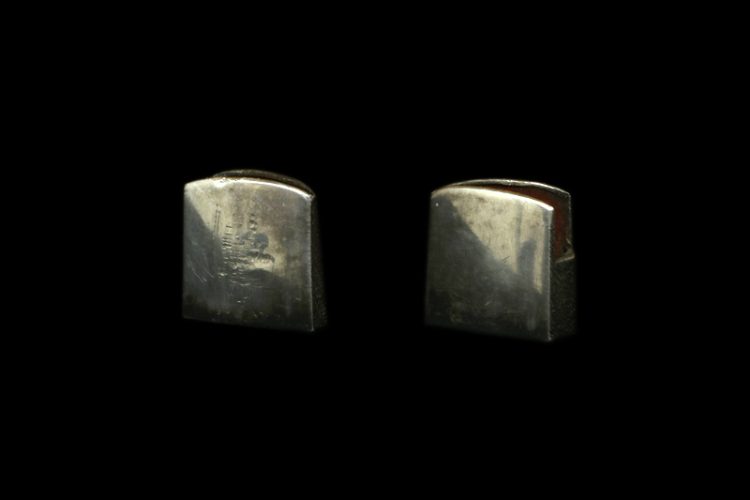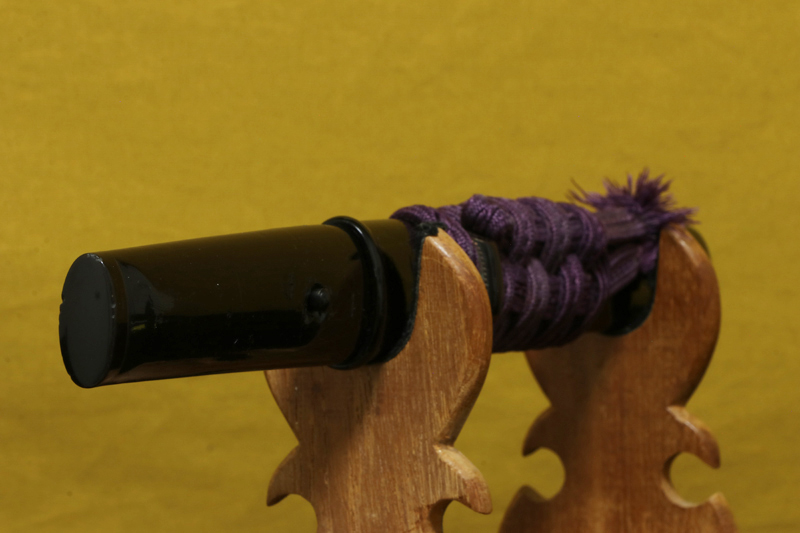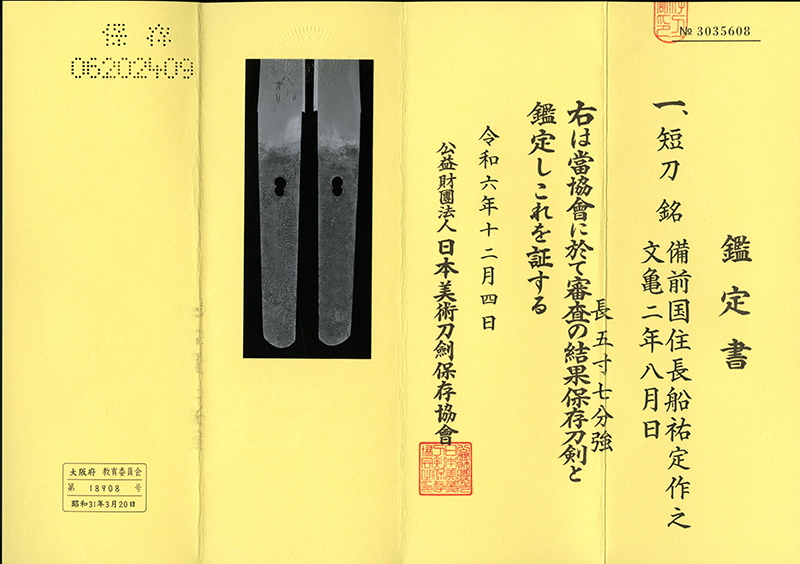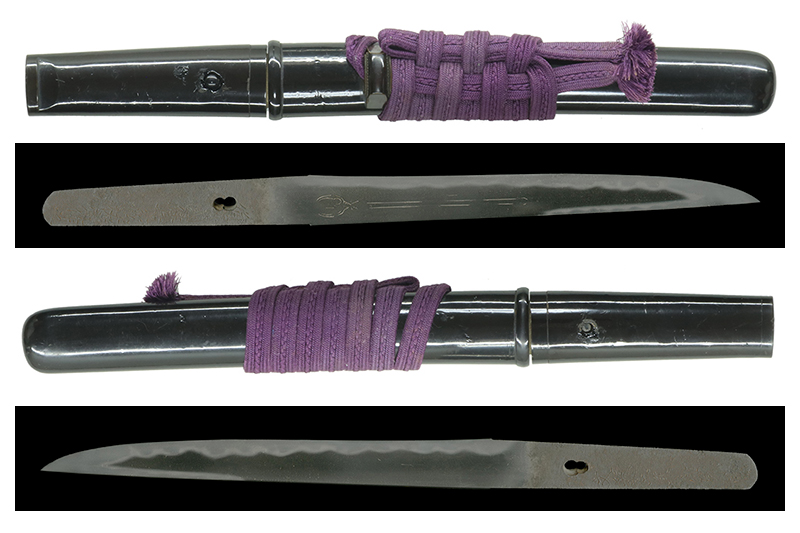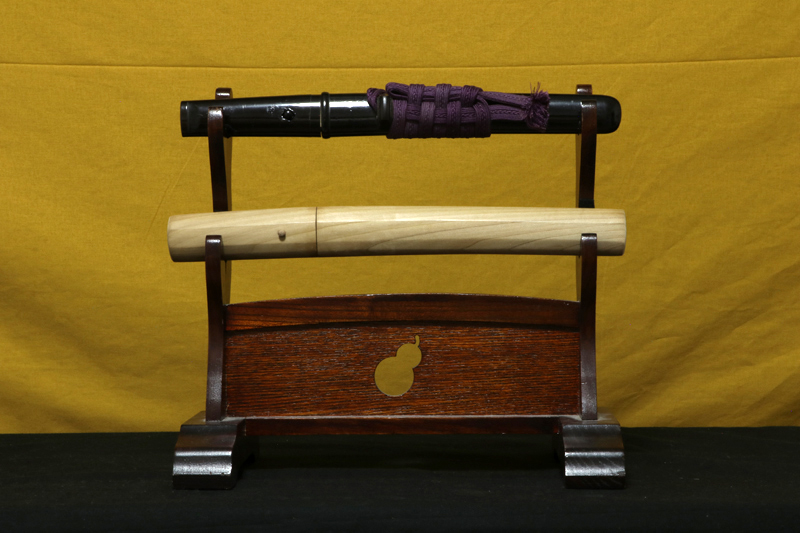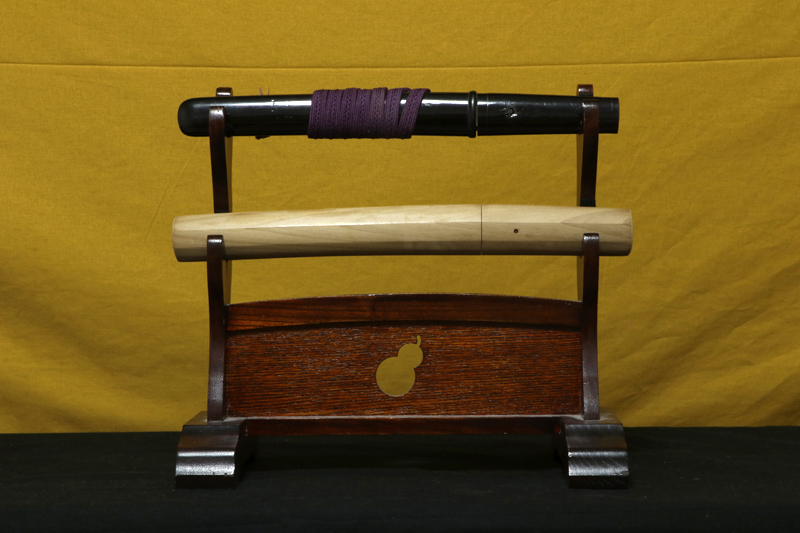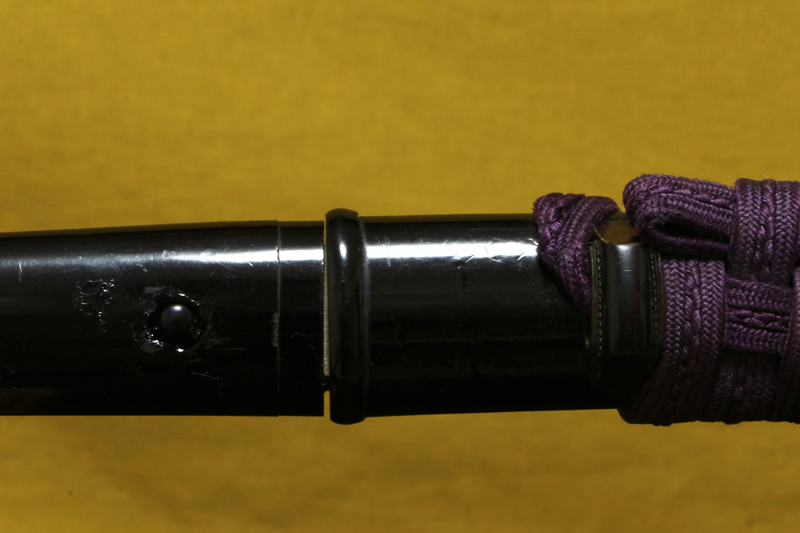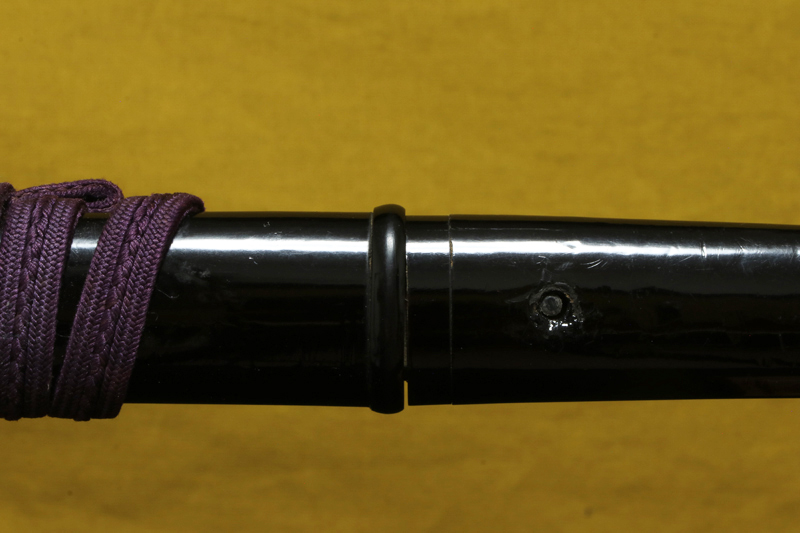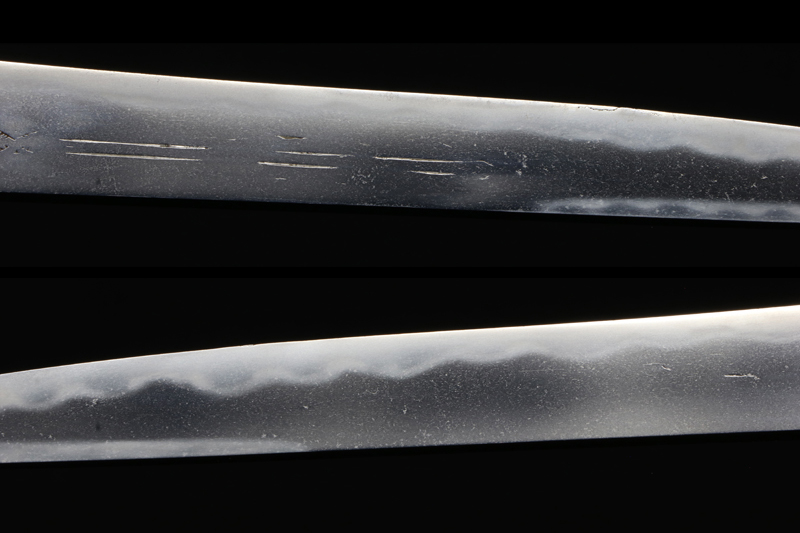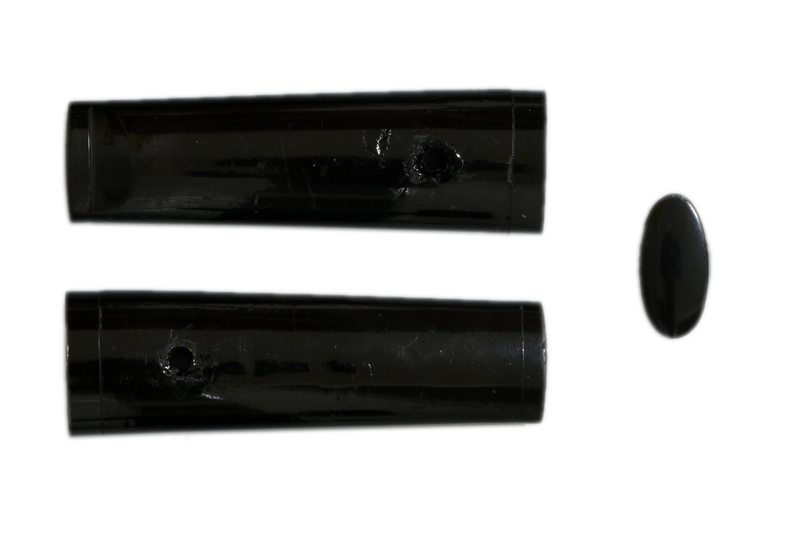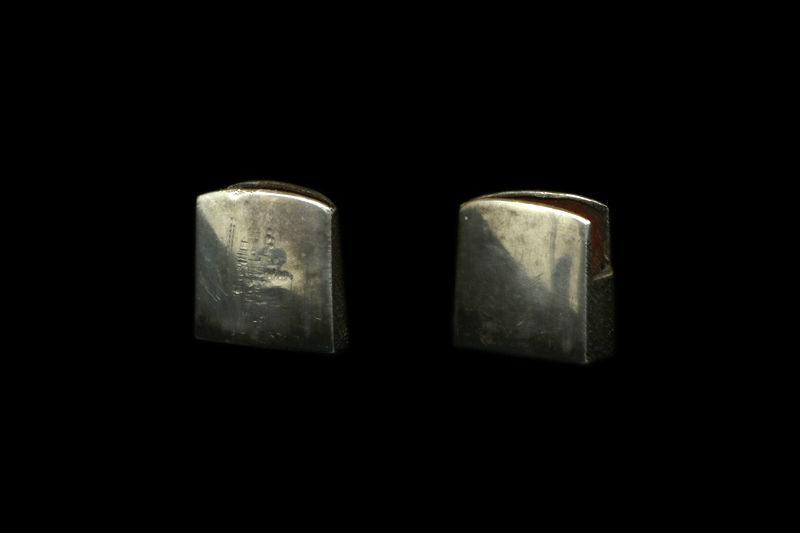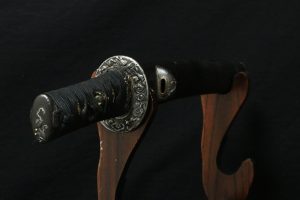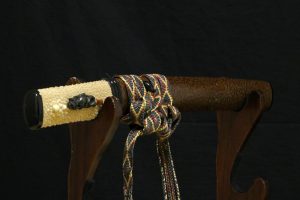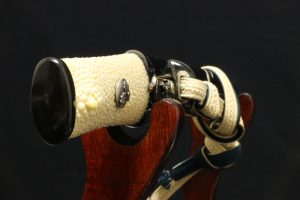説明
「刀姿 sword figure」
平造り庵棟、身幅細く重尋常、内反りふくら枯れる。茎は生で浅い筋違い鑢がかかり、茎尻は栗尻。
「彫物 carving」
彫り物は差表に素剣が彫られる。
「地鉄 jigane」
地鉄は小板目が良く詰み、地沸付く。
「刃紋 hamon」
刃紋は互の目、刃縁沸が付き砂流しかかり、刃中は稲妻が働く。釯子は刃紋成りに入り尖り、深く返る。
「特徴 detailed」
備前国住長船祐定作、室町時代に祐定を名乗る鍛冶は可なりの数います。その中でも「彦兵衛尉祐定」「与三左衛門尉祐定」「与左衛門祐定」「源兵衛尉祐定」が有名です。この短刀は俗名が入っていないため、確定は出来ないですが、銘ぶり・文亀二年の年季・茎の形状・その他から彦兵衛尉祐定の作品だと思います。彦兵衛尉祐定は室町時代中期の長享から永正にかけて活躍した鍛冶で、大業物に認定されており、また子は与三左衛門尉祐定です。
室町時代中期の短刀は、護身用に懐中にしのばせる懐剣として寸法が五・六寸位の小振りで、ふくらが極端に枯れて、人工的に内反りをつけた平造りの短刀で、元重を厚く先重を薄くして刺突に適した、いかにも鋭利な感じがするのが、この時代の特徴です。また懐剣という用途から、拵をかさばらないで丈夫にするために、柄の部分にあまり補強をしなくてもすぐ使えるように、茎の長さはだいたい握り拳一つぐらいの長さで、しかも先太の茎形で作られており、刀身に比較して茎の長さが異様に長くアンバランスな感じを受けます。本作はこの全ての特徴を持った短刀で、室町時代中期の混沌とした時代に作られた貴重な懐剣です。
刀身のコンディションは、古研ぎのため少し薄錆が有りますが、地刃は良く見えます、拭い直しで綺麗に成ります。
拵は江戸時代後期の物です、やはりこの時代も油断の出来ない時代のため、このような懐剣が必要だったのでしょう。
This tantō (short sword) cannot be definitively attributed by name inscription alone, but based on the style of the mei, the date inscription (Bunki 2
—1502), the nakago characteristics, and other details, it is likely a work of Hikozaemon-no-jō Sukesada, who was active from Chōkyō to Eishō (c. 1487–1521). He is recognized as a ō-wazamono (great sharpness grade), and his son was Yosazaemon-no-jō Sukesada.
Mid-Muromachi-period tantō were typically carried as small self-defense knives (kaiken), with a length of around 5–6 sun (≈15–18 cm). They feature a flat construction, heavily tapered tip, thick at the base and thin at the tip to make them well-suited for stabbing. The nakago in this era tended to be unusually long—roughly a fist’s length—to allow for a sturdy mounting without excessive hilt reinforcement, resulting in a slightly unbalanced appearance compared to the blade. This piece embodies all these period-specific characteristics, making it a rare and valuable kaiken from the turbulent mid-Muromachi era.
The blade is in good condition, showing minor light rust from its old polish, but the jigane and hamon remain clear. A professional polishing (nuguinaoshi) would restore its luster.
The koshirae dates from the late Edo period, a time when such gakushiki kaiken were still necessary due to volatile social conditions.
「拵 Koshirae」
合口拵は塗に傷や凹みが有りますが、塗りなおせば綺麗に成ります。
ハバキ(habaki) :素銅地銀着せ一重の磨き地。
塗り(Color) :黒呂。
「刀剣の状態 condition of blade」
研:古研ぎのため少し薄錆が有りますが、地刃は良く見えます、拭い直しで綺麗に成ります。
傷:刃中に一ヶ所小さい傷が有りますが、目立ちません。その他、欠点に成るような傷は有りません。
